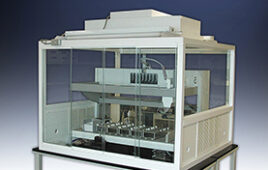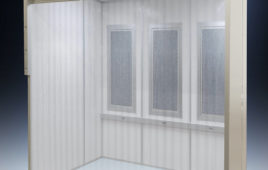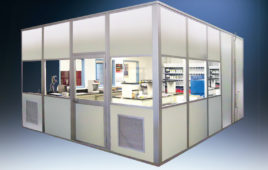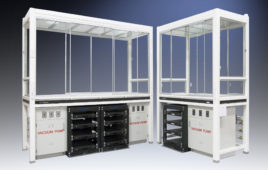High-speed doors play a key role in maintaining clean operations in pharmaceutical plants. They are designed to address facility needs for environmental control, productivity and safety (as well as cleanliness). In cleanroom applications, they are used to maintain correct room pressures, air circulation rates and optimal operating efficiency and to prevent cross-contamination. High operating speeds are critical to minimize air infiltration when staff members enter or exit.
Cleanroom doors should be cGMP and FDA compliant, highly durable and easy to clean. Specifically, they must be able to stand up to repeated cleaning with chemical solvents and have a smooth, hard, non-porous surface resistant to microbial and fungal growth. In order to do this, door materials should be corrosion-resistant and use side frames and shrouds constructed from stainless steel.

Cleanroom high speed roll-up doors have a tough PVC vinyl curtain, and are resistant to collecting dust along with being easier to clean. Image: Rite-Hite
The design should also include a tapered surface and edges that effectively eliminate harborage of dust and other contaminants. The incorporation of a lubrication-free design is another important feature in cleanroom doors, as lubricants can actually attract particulates.
Doors with exposed fasteners and coils should be avoided when possible, as they take longer to clean and could harbor contaminants. When possible, any control boxes should be mounted flush with the wall or outside of the cleanroom.
The ability of cleanroom doors to accommodate site-specific needs is another consideration. These needs could include features such as vision panels, push plates or other activation devices, as well as magnetic locks and—perhaps most importantly—interlocking systems (air locks). Air locks are found in entrances and exits, gowning and de-gowning areas, and material transfer locations. In all these areas, it is important to keep two doors from being open simultaneously to prevent air infiltration from one space to the other. The best door systems allow for wireless interlocking of air locks.
This cleanroom tip was contributed by Jon Schumacher of Rite-Hite Doors.




